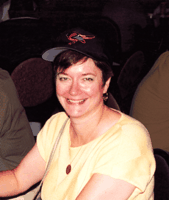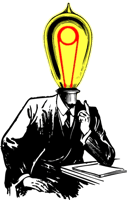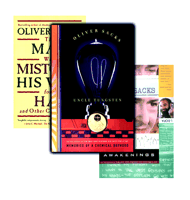Testing One's Mettle: Reminiscences of Childhood and Rediscovering the Chemistry Wheel
- Christine K. Carrico, PhD, Executive Officer of ASPET
Living in a medical household, hearing my parents and older brothers talk about patients and medical conditions, both fascinated
and (sometimes) appalled me, but my new chemical vocabulary allowed me, in a sense, to compete with them. They might talk
about empyema (a beautiful, nuggety, four-syllable word for a vile suppuration in the chest cavity), but I could cap it with
empyreuma, that glorious word for the smell of burning organic matter. [p. 234]
Anyone who has seen the movie Awakenings or read the book The Man Who Mistook his Wife for a Hat knows that Oliver Sacks is a neurologist. However, in Uncle Tungsten— the autobiography of his younger years—you find out that as a child, Sacks wanted to be a chemist. As early as the age of three, he was fascinated by metals, and his interest in science and the world around him was fostered and encouraged by his parents, both physicians. His fascination with metals, however, seems to have come from his Uncle David, the Uncle Tungsten of the title. Uncle Tungsten loved metal, especially tungsten, which he used in his business of making light bulbs.
Sacks chronicles growing up in pre-WWI northwest London in a multi-roomed house that was, at once, warm and loving, and somewhat mysterious. At the age of five, he was one of thousands of children sent out of the city by their parents to protect them from the bombing. Sacks and his older brother were sent to a boarding school, his memories of which are something more akin to Oliver Twist than Oliver Sacks. One wonders, because he was such an inquisitive and talkative child, why he never mentioned to his parents how horrible the school was. Apparently it only occurred to them that something was amiss when he was the only child to remain at the school; all the other parents had removed their children to other locations. This experience had a lasting impact on Sacks and may explain why for the next ten years of his life he preferred to putter around in his home chemistry lab than to be out socializing with other children. Sacks suggests that the order and logic of chemistry provided him with a place to escape the horrors of the boarding school.
In 1945, at the age of twelve, he discovered the periodic table at the Science Museum in South Kensington. This particular periodic table was actually a wooden cabinet with ninety-odd cubicles, corresponding to the known elements. Each cubicle was inscribed with the name, atomic weight, and atomic number of the element and contained a sample of the element (providing it could be safely exhibited). This periodic table captured his imagination and was the basis for much of his fascination with the chemical families and their properties. He seems to have had an innate feel for chemistry, connecting in his mind the chemical families to the senses of sight and smell. Even before he understood about orbitals and electrons, he sensed the relevance of valence to color and physical properties. He found quantum mechanics infinitely less interesting.
He experimented in his basement laboratory using texts written by the fathers of modern chemistry—sometimes doing experiments that today would be completely banned—often with spectacular results. In fact, after one such incident, his parents invested in a fume hood for his laboratory. It is apparent that Sacks delighted in rediscovering the science of the previous century on his own. He details his experiments with metals, luminescence, radioactivity, spectroscopy, and the mathematics of orbital theory.
Sacks liked to collect objects that somehow related to chemistry—minerals, stamps that had a chemistry theme, bus tickets with numbers that contained chemical symbols, old chemistry texts, etc. He was a collector not only of objects, but also of facts. He was fascinated by the lives of the illustrious chemists, and interspersed descriptions of these individuals and their discoveries with descriptions of his own chemical endeavors. Stories of luminaries such as Marie Curie, Antoine Lavoisier, Humphrey Davy, Dmitri Mendeleev, and J. J. Thompson, are filled with interesting anecdotes of the sort no modern chemistry text book includes, but which make these scientific celebrities seem very human and touchable. Indeed, Uncle Tungsten is almost as much a history of the field of chemistry as it is an autobiography of Oliver Sacks.
This is a story not only of a boy's love for things chemical, but also a chronicle of a remarkable family that loved music, had a strong scientific leaning, was deeply religious, and encouraged the curiosity of a young boy. Because both of Sacks' parents were dedicated physicians, it is not too surprising that he ultimately abandoned chemistry to pursue medicine. Still, Sacks never lost his interest in chemistry, and many years later, after reading Roald Hoffman's book Chemistry Imagined, he began to correspond with the Nobelist and chemistry historian. It is to Hoffman that Sacks credits his decision to write this book, and so the reader too, owes Hoffman a debt of gratitude for allowing us this glimpse at Sacks' “memories of a chemical boyhood.”
Oliver Sacks has written several books based on his experiences as a practicing neurologist, including the award-winning The Man Who Mistook His Wife for a Hat, and Awakenings, upon which a movie was based.

- © American Society for Pharmacology and Experimental Theraputics 2002





